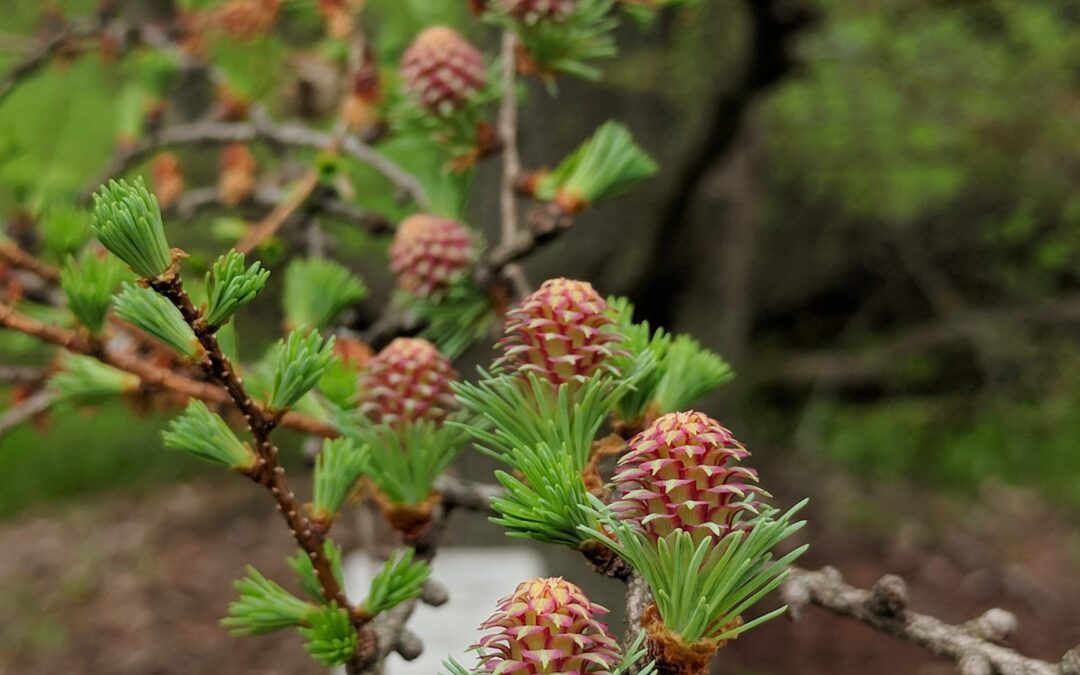
by Meriel Bradley | Garden, Garden Gallery |
The Japanese Larch is a sun-loving deciduous conifer.
One of the things I find enchanting is the softness of the needles which emerge in clusters as a lovely light green in the spring.
They will become a richer blue green through the summer and turn an outstanding yellow before falling from the tree in autumn.
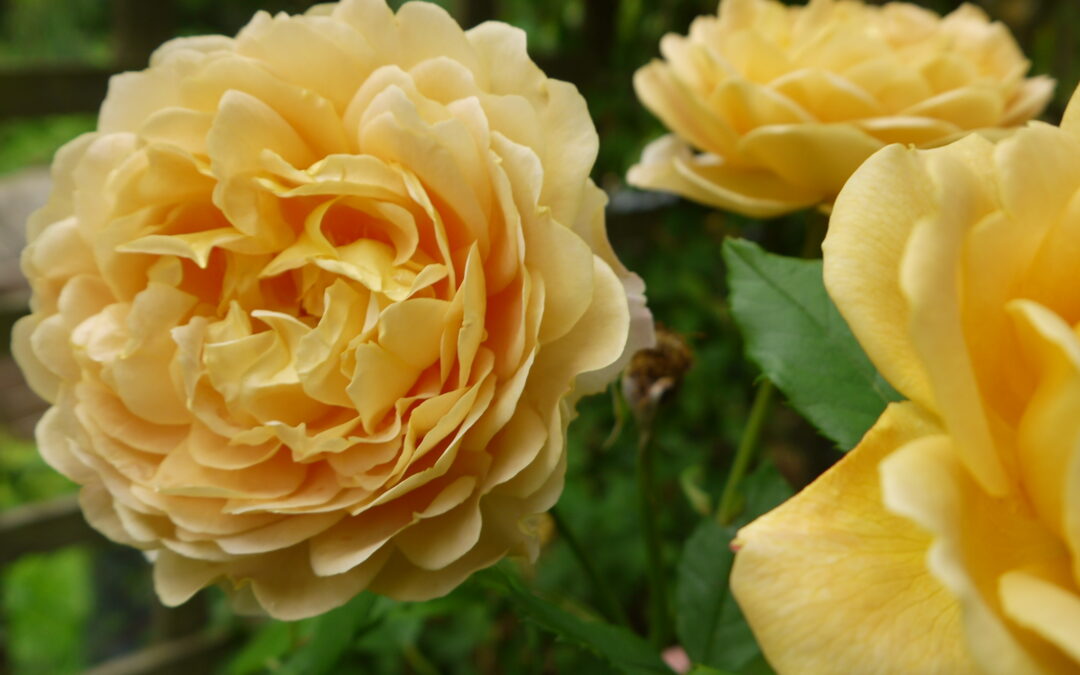
by Meriel Bradley | English Garden, Garden, Garden Gallery |
Golden Celebration Rose by David Austin.
Its incredible blooms displayed on elegant arching branches are one of the largest blooms found on an English rose.
It has a wonderful fragrance described by David Austin Roses as having a “tea fragrance” that “develops wonderfully combined notes of Sauternes wine and strawberry” so be sure to choose a location where you can enjoy its evolving perfume.
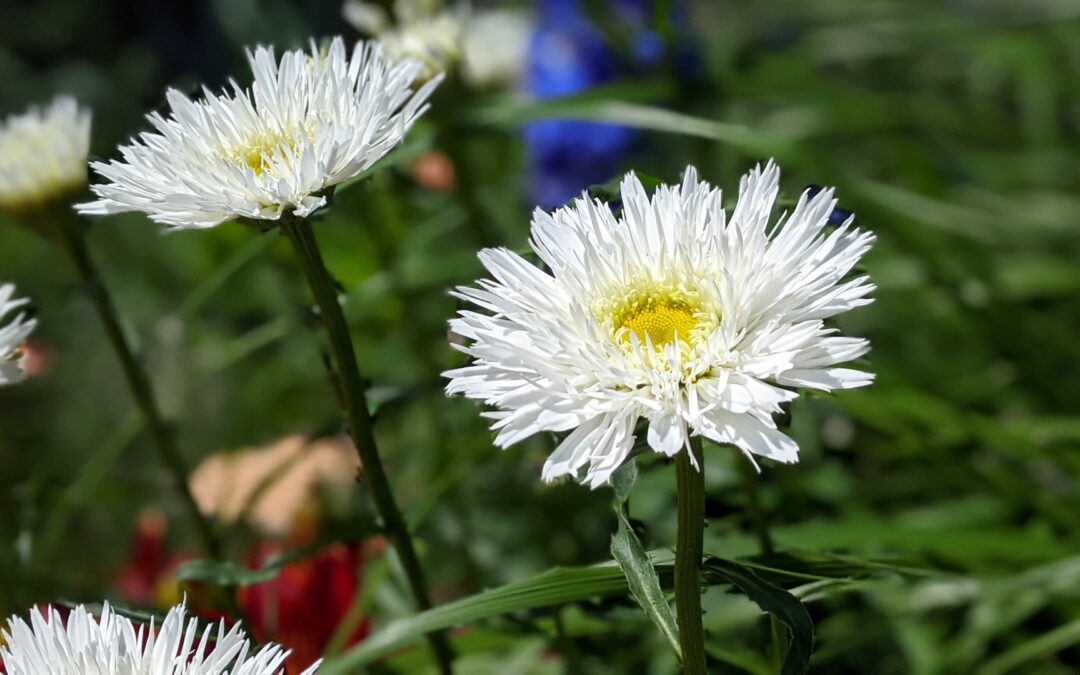
by Meriel Bradley | Garden, Garden Gallery |
The Shasta Daisy is a perfect, low maintenance perennial and is great for naturalizing to fill out your flower beds with blooms year after year.
They will flower from early to late summer and deadheading the spent flowers will extend their bloom period.
Grow in full sun for the best blooms.
To keep them vigorous, divide them in early spring or late summer every 3 to 4 years. They will also self-seed if you leave some of the spent blooms on the plant at the end of the summer even though the plants that grow from seed may not look like the parent plant.
In the fall, after they have finished blooming, cut back the dead stems to ground level, and cover with a layer of mulch to provide winter protection.
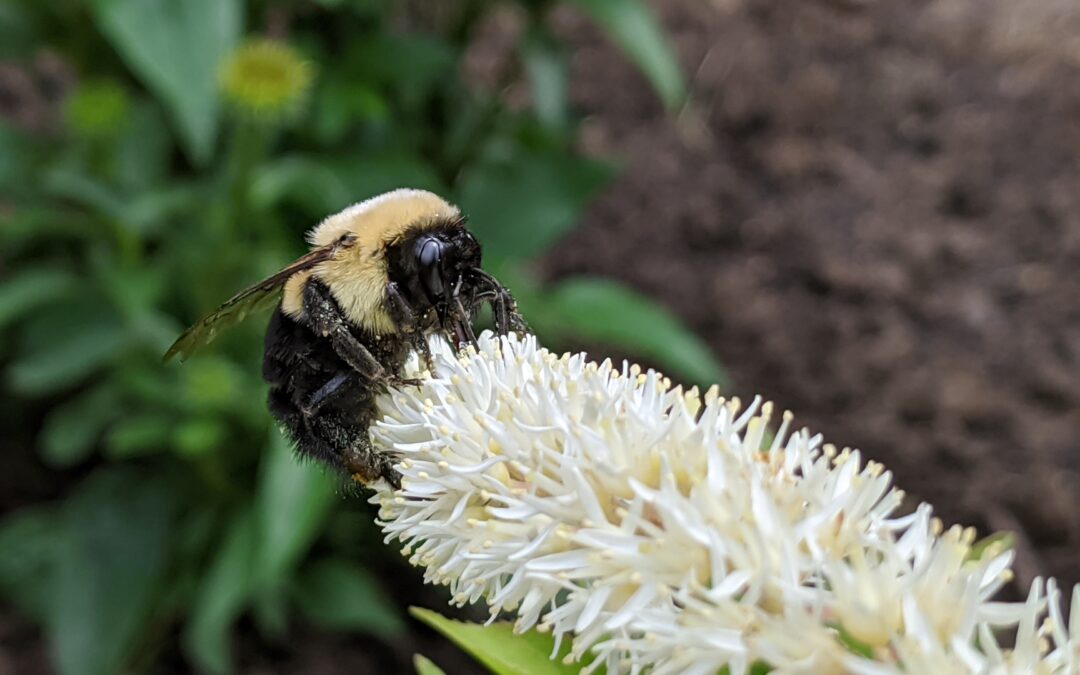
by Meriel Bradley | Garden, Garden Gallery, Garden Wildlife |
Tips for a bee friendly garden:
Choose native plants, trees, and shrubs rich in pollen and nectar
Provide continuous bloom so you always have plants blooming from spring until fall
Many native bees build nests in soil, so leave some bare patches and limit your use of mulch
Provide fresh water
Make or buy a bee house
Don’t spray pesticides – garden organically
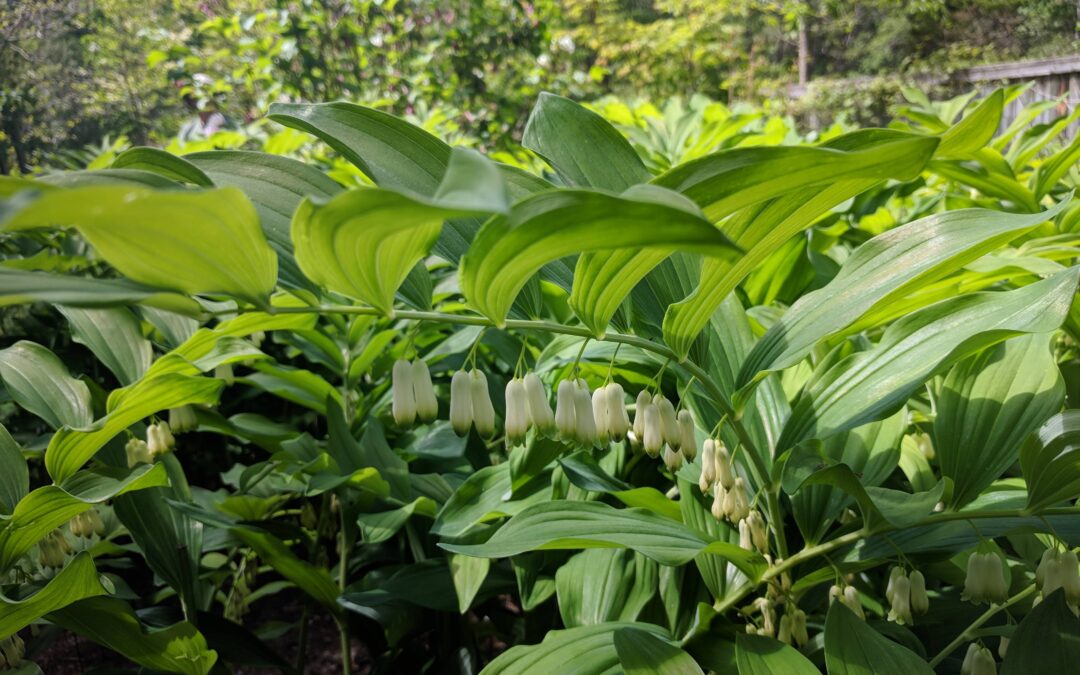
by Meriel Bradley | Garden, Garden Gallery |
Native to North America, Solomons Seal is a beautifully elegant woodland plant with its arching stems and dangling flowers.
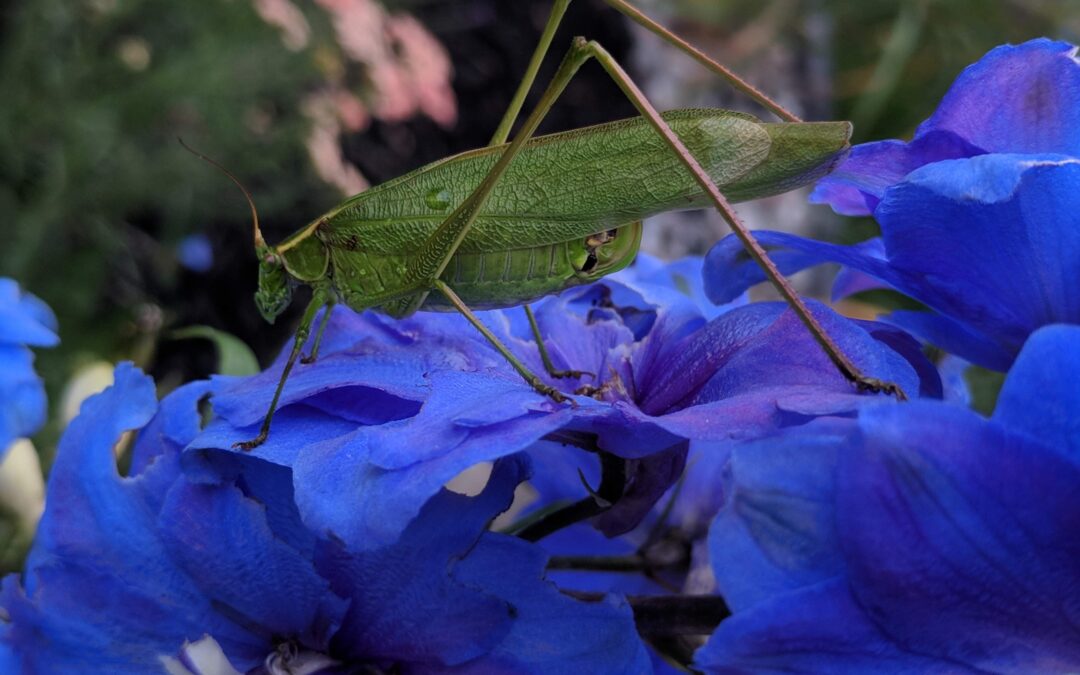
by Meriel Bradley | Garden, Garden Gallery, Garden Wildlife |
I found this Green Bush Cricket on my Delphiniums and had to get a picture – the colour combination of his green and the blue of the flowers is magnificent. I hope you enjoy the picture as much as I do.





